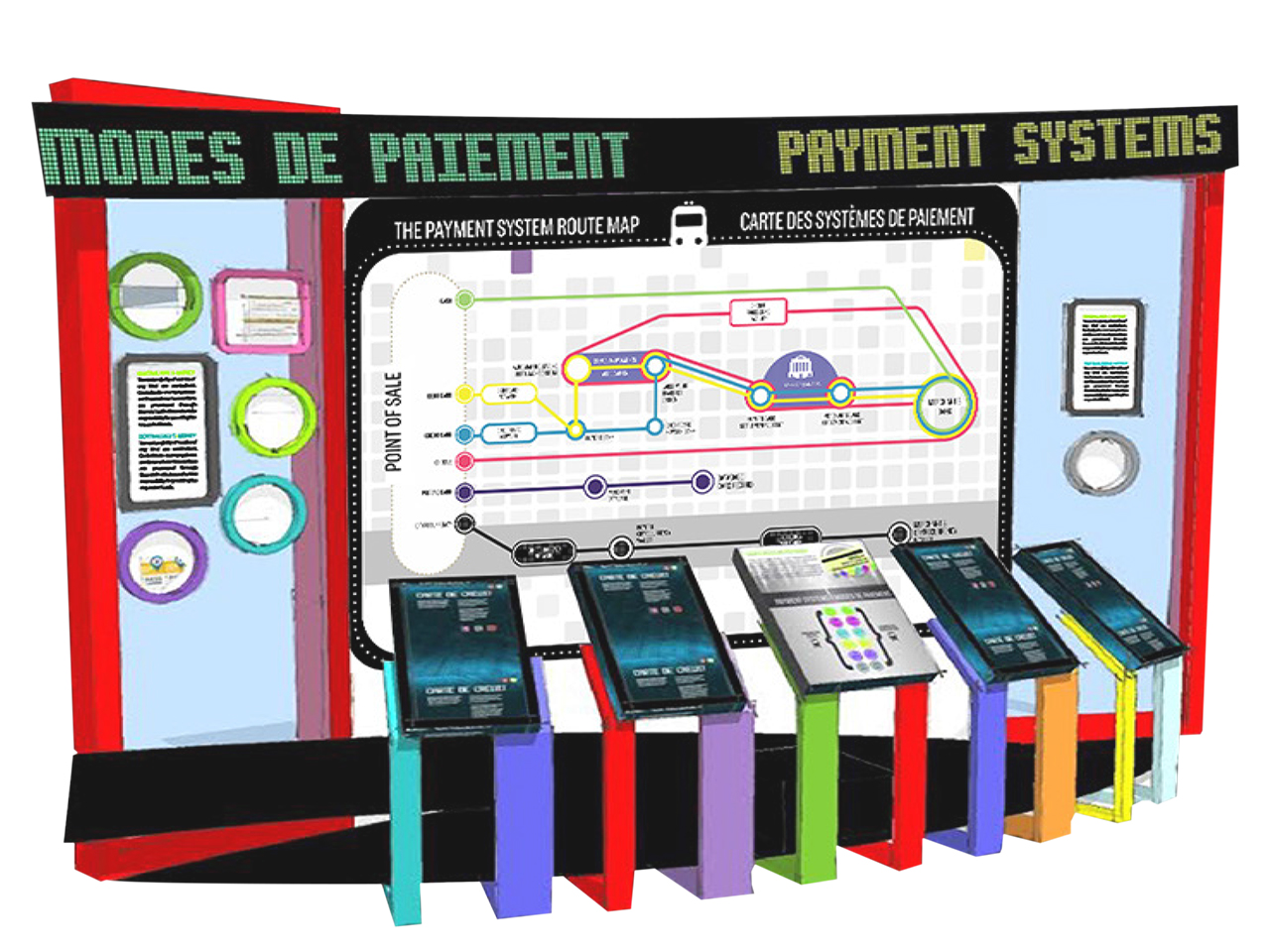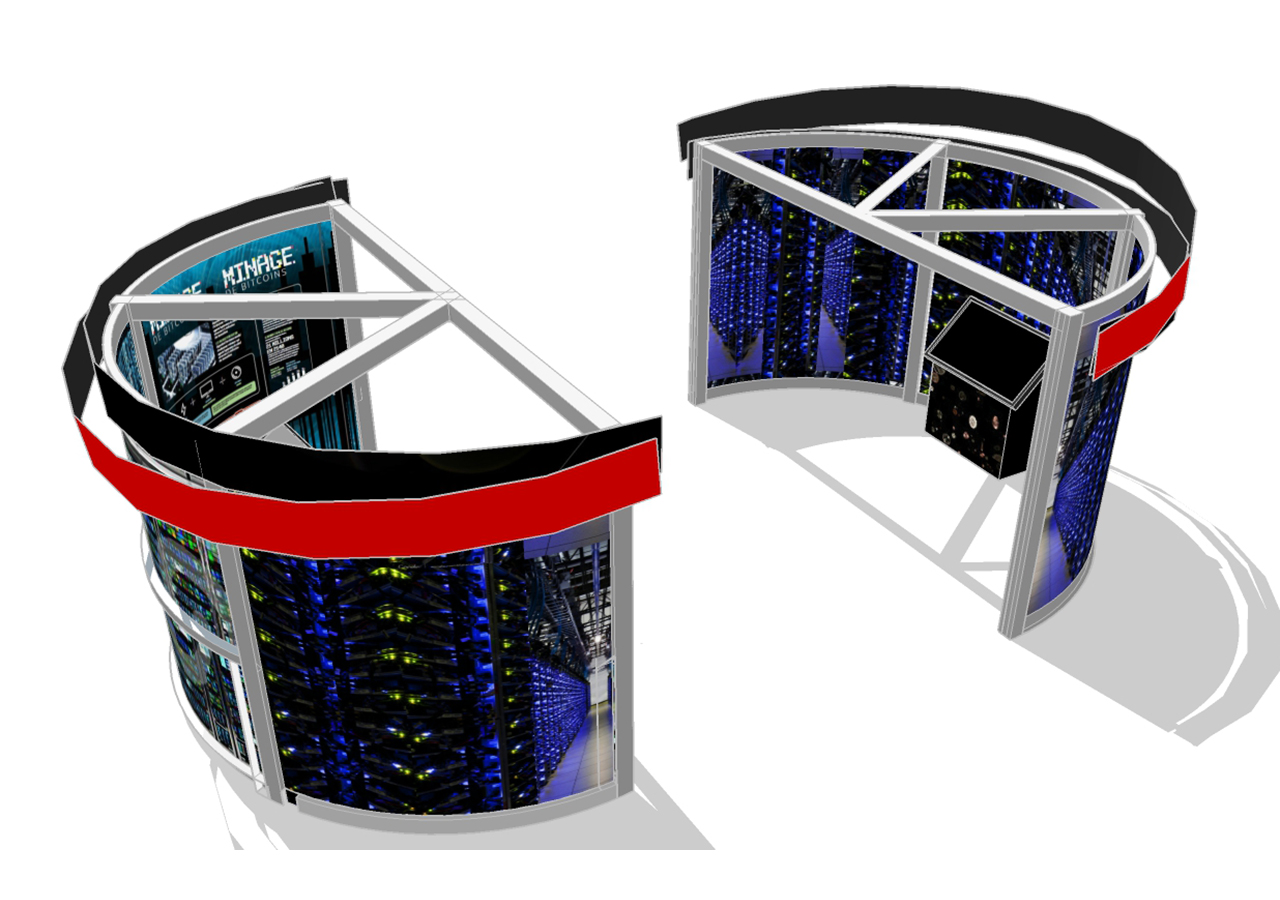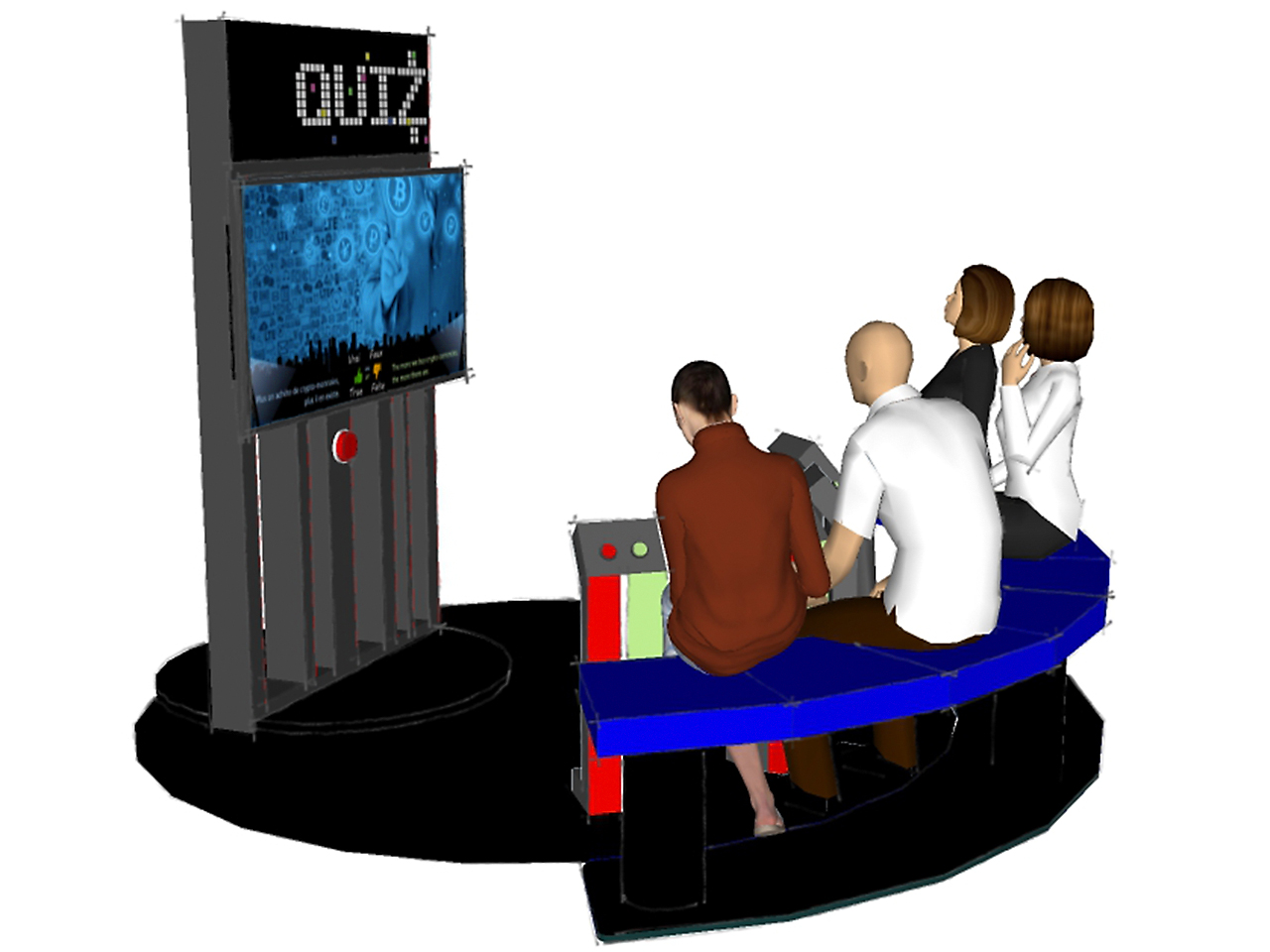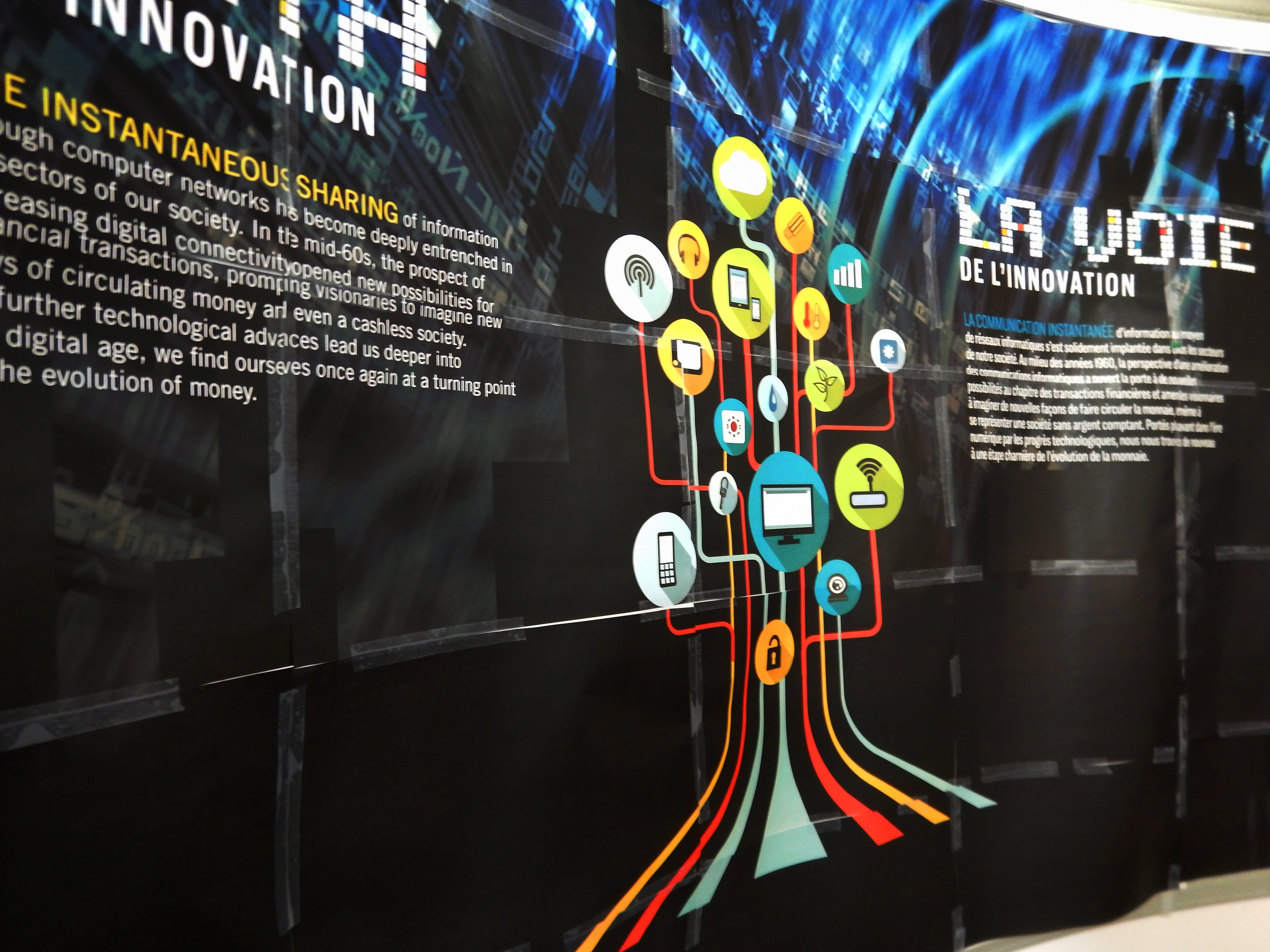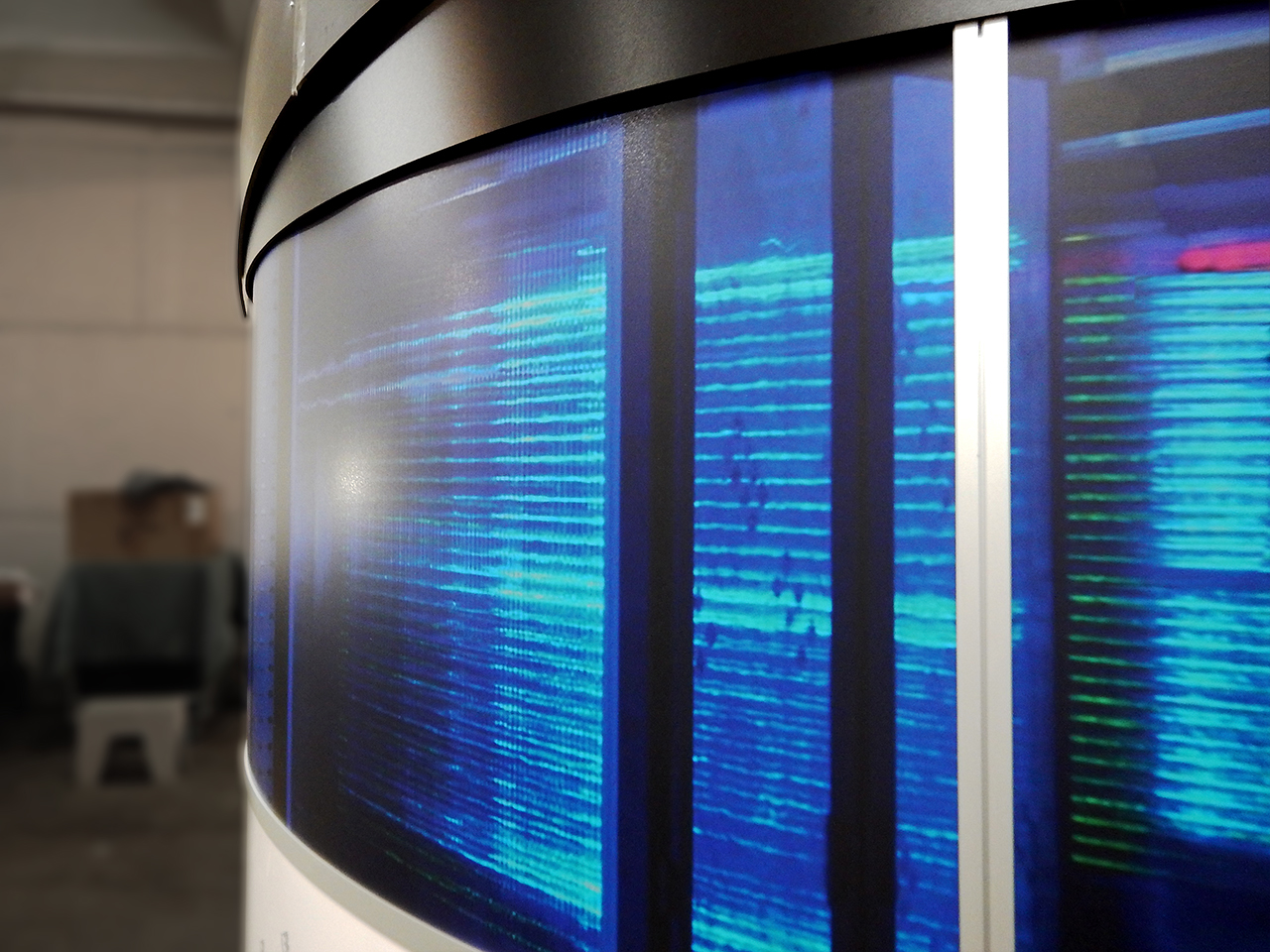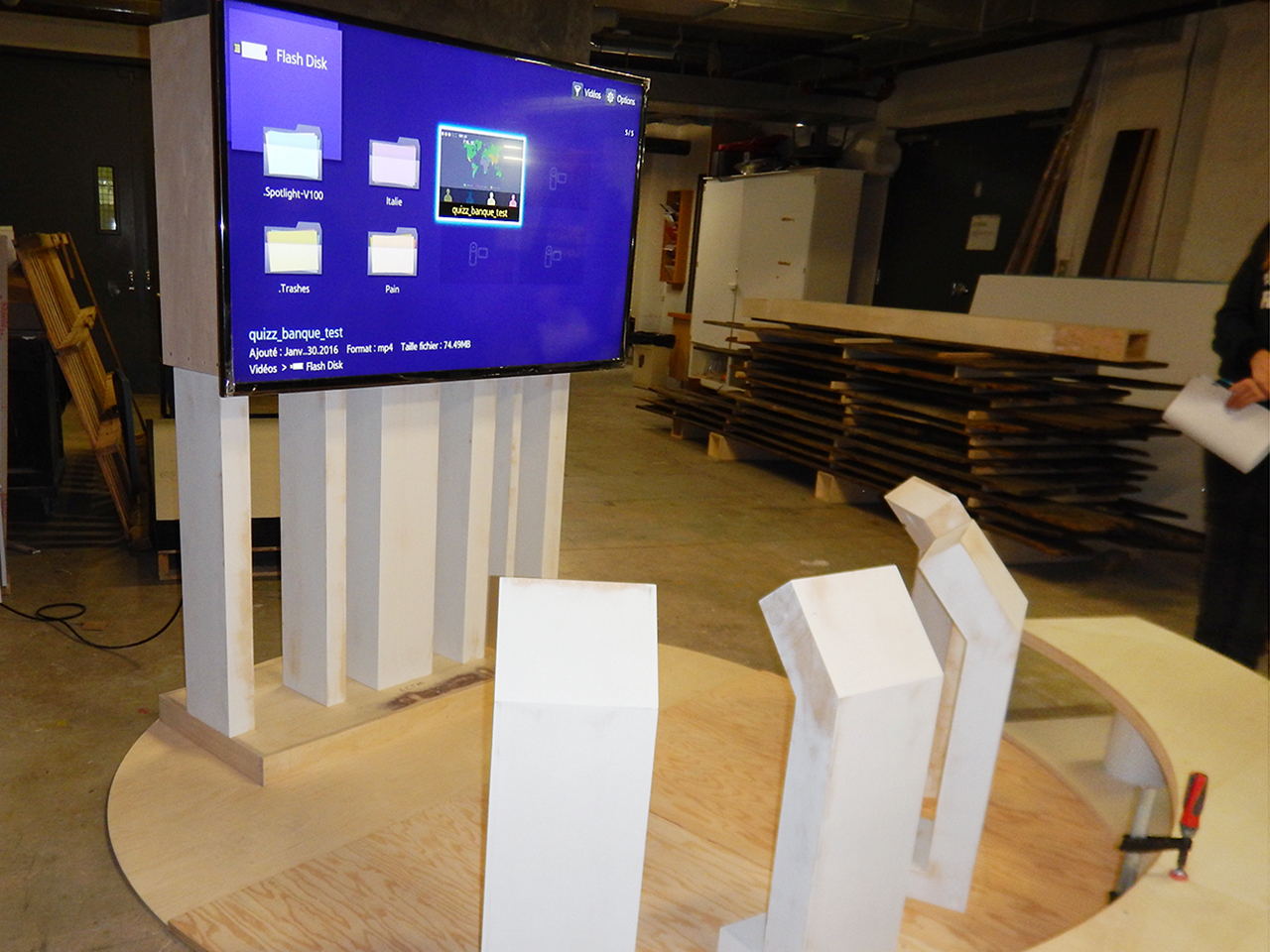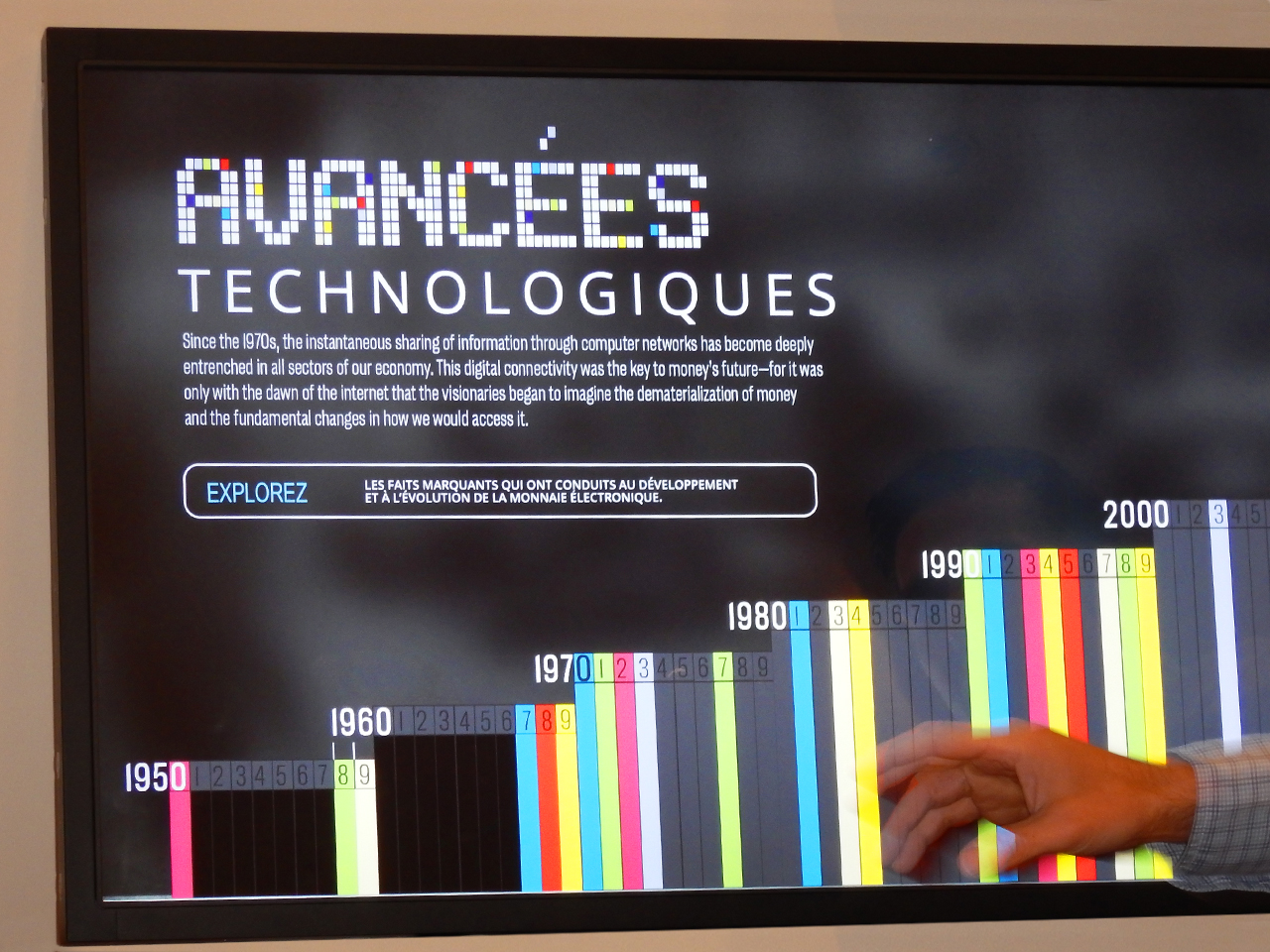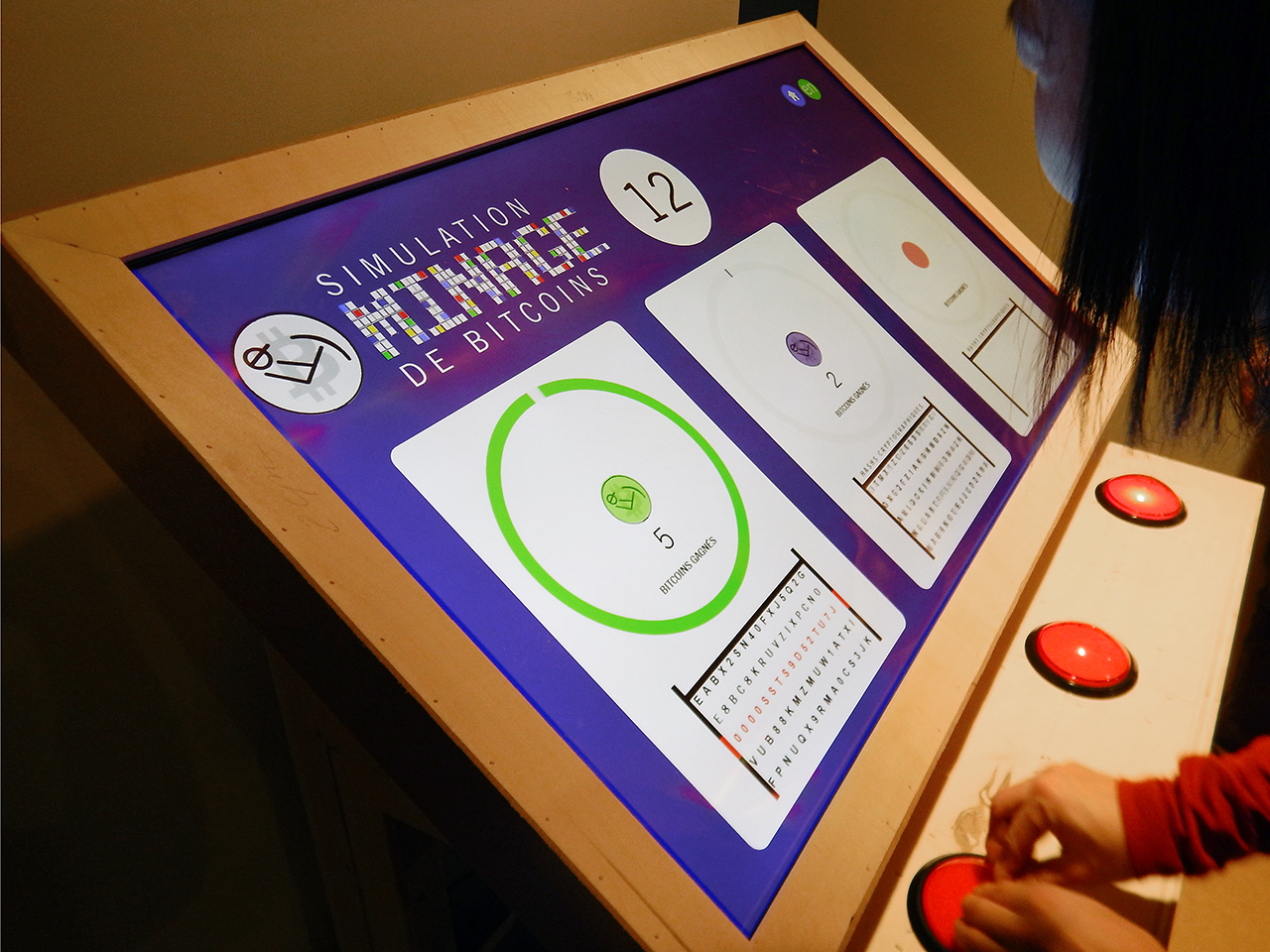This exhibition is in fabrication
Clearly we hadn’t got our display units sorted out yet.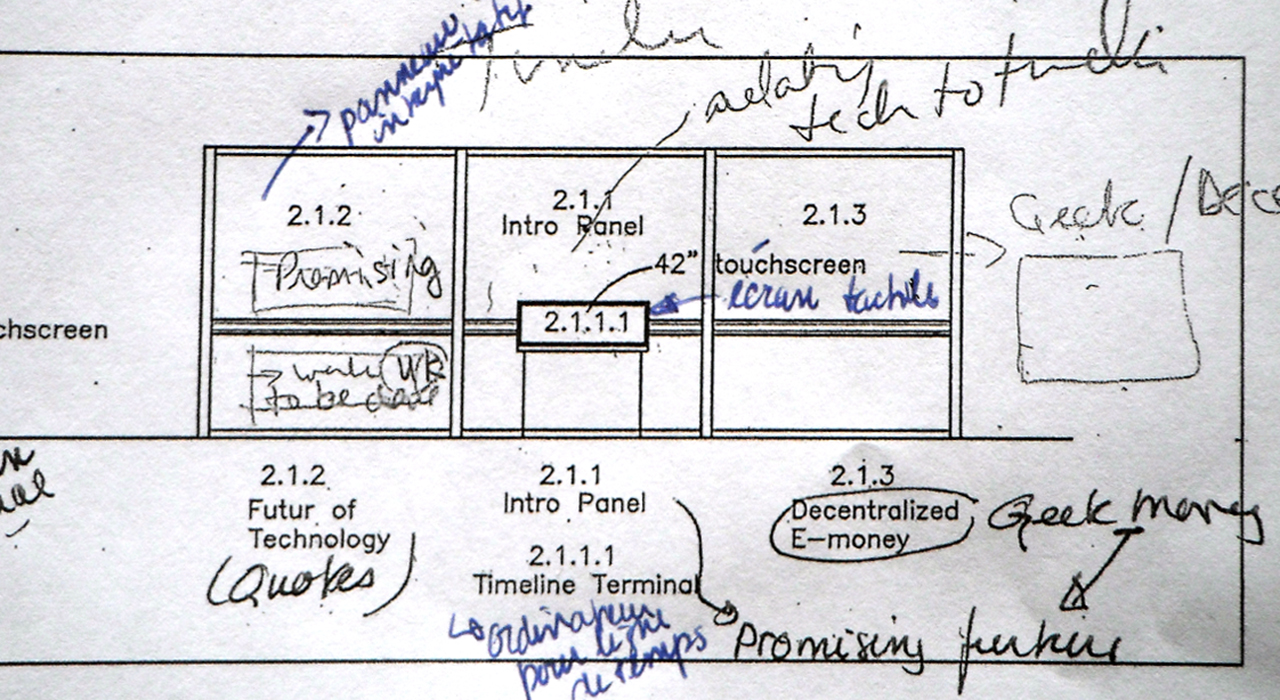
The last time I blogged about our upcoming travelling exhibition, Decoding E-Money, I described the process we went through in order to choose a name. We were a little late in getting that blog out, so plenty had already happened on the interpretational planning front by then. But reading about exhibition content spreadsheets and artifact tombstone labels really is a big snore. So this time I thought I’d wait until we had something more exciting and concrete to show you: actual prototypes, finalized designs—that sort of thing.
And now I do.
But just before I take that leap, let’s talk content. This has been an extremely challenging exhibition to develop. We are taking, for us, the unprecedented step of interpreting something that is not only current but continually changing. We do feature over 60 historical artifacts, nevertheless this time the interpretation of history was a relative piece of cake. Interpreting the present or even the recent past, however, was anything but. The subject matter is often in a state of flux where nothing is cut and dried and much is open to dispute.
Where does the money go when you pay with a debit card? Or how do we describe the highly complicated steps of processing a Bitcoin transaction? Luckily we have an office tower full of financial experts on hand and we’ve been gratefully relying upon them to help us get the content right. Though very happy to help, it was a little like the economists and analysts spoke Finnish and we spoke Hindi. It took all sorts of meetings and about a square kilometre of whiteboard space before we got all the content to a satisfactory place. That place is somewhere between the comprehension level of a clever 12 year-old and that of a central bank economist—thankfully closer to the former.
And now we have someplace to put all this content. In consultation with our own designers, the exhibition development team has been working hard to produce a presentation whose visual character and immersive qualities reflect the frenetic and high-tech world of electronic money transfer. Much of the content will be available via touch panels. This is not only the natural choice to reflect the modernity of the material, but crucial when working with content that can and will change over the life of the exhibition. It’s just a whole lot simpler to change text on a computer than on a printed panel.
Some of the interactive systems are fully functional; some are still in the paper and tape stages. The big display units are nearly ready and most of their winking lights and animated projections are operative. It’s pretty exciting and looks great. Over the next few weeks we will have a fully functioning exhibition ready for final testing and tweaking. Stay in touch.
Who didn’t want a Lite-Brite© when they were kids? The exhibition title is a moving LED text light.
The Museum Blog
Whatever happened to the penny? A history of our one-cent coin.
By: Graham Iddon
Good as gold? A simple explanation of the gold standard
By: Graham Iddon
Speculating on the piggy bank
By: Graham Iddon
New acquisitions—2024 edition
Money’s metaphors
Treaties, money and art
Rai: big money
By: Graham Iddon
